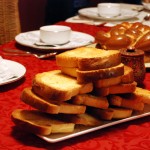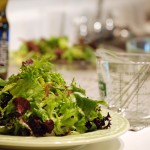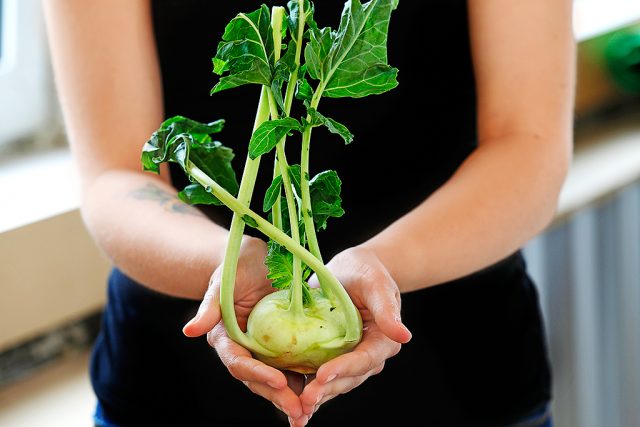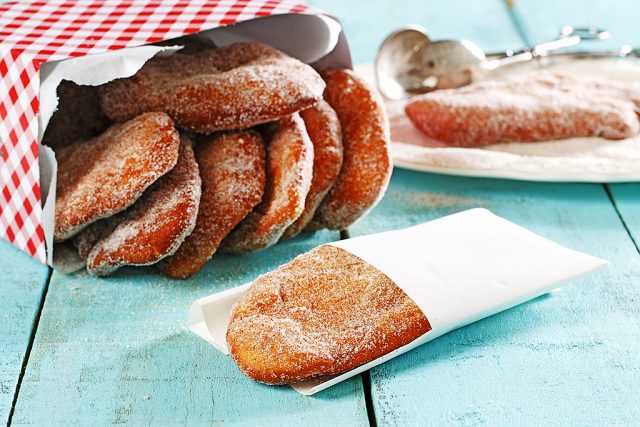We added this post last year but I wanted to pull it out and share again for all of our new followers. Enjoy!
In celebration of our diversity and my personal interest in cultural events, I have chosen to share with you an article written by Shel Zolkewich on Ukrainian Christmas. My heritage is not Ukrainian but after reading this I started wondering who wanted to invite me over on January 6 to share in the festivities and the feast! Anyone?!?
Eat Well… Jenn
Canola Makes an Important Contribution to a Holy Meal
By Shel Zolkewich
Once the festivities of Christmas and New Year’s are over, Canadians of Ukrainian descent look forward to a celebration where gift giving comes last and the strength of the family takes centre stage—Ukrainian Christmas.
So why is there a second Christmas? Many Ukrainians and Canadians of Ukrainian heritage follow the ancient Julian Calendar in their churches. While Christmas is celebrated on Dec. 25 on the Gregorian calendar, it falls on Jan.7 on the old calendar. While many Orthodox churches including Greek, Syrian, Serbian and Bulgarian also follow the Julian calendar, Jan. 7 had become known as Ukrainian Christmas because of the large numbers of Ukrainians who celebrate the event.It all begins on January 6, Ukrainian Christmas Eve, with a holy supper called Svyata Vechera. The meal consists of 12 meatless dishes, symbolic of the 12 apostles. The day is one of fasting where meat, animal fats, milk and milk products are avoided. Cooking oil must be used in place of butter and lard throughout the meal. And that’s where canola oil comes in.
Kutya is the first course. It’s a mix of cooked wheat, poppy seed and honey, served cold. Each person at the table receives only a spoonful at first, served by the head of the family. A prayer remembers those who have left us, asks for health and prosperity and gives thanks that families can share this time together.
Following the kutya, the remaining dishes are brought to the table. The mix includes soup, several kinds of perogies, breads, fish dishes, salads, mushrooms and a fruit compote to end the meal.
 Garlic Toast
Garlic Toast
In a nod to the Italian way, oil is used in place of butter for the garlic toast that’s served with the soup course. Start with an unsliced crusty loaf from a good bakery. Make thick slices and toast each side under the broiler. Brush with a mixture of canola oil and fresh-chopped garlic.
 Salad
Salad
Start with your favourite mix of greens. For the dressing, invest in some cold-pressed canola oil. It has a decidedly more nutty flavour than the canola oil you typically use for cooking. Follow a vinaigrette recipe and use items like Dijon mustard, red wine vinegar, salt, pepper and cold-pressed canola oil.
 Perogies and Onions
Perogies and Onions
Use canola oil to prevent your freshly boiled perogies from sticking together. For extra flavour, top them with caramelized onions. Slice two large white onions. Sauté in canola oil over medium heat for 20 to 30 minutes. Add a tablespoon of white sugar and cook for another minute or two. Your onions will be a rich amber colour.
 Pan-fried Pickerel
Pan-fried Pickerel
Let the delicate flavour of this flaky fish to come through with a light hand in the seasonings department. Salt and pepper each side of the fillets. Add canola oil your frying pan over medium-high heat. Add one to two cloves of garlic to your pan just before you add the fillets. Reduce heat to medium. Fry on each side two to three minutes.
Be Well…Shel



